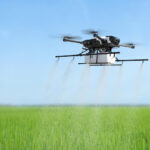When growing broccoli in South Africa, there are a few infections and diseases that you should watch out for to ensure the health and productivity of your plants. Here are some common ones:
- Clubroot (Plasmodiophora brassicae):
Clubroot is a soil-borne disease that affects brassica crops, including broccoli. It causes swelling and deformation of the roots, leading to stunted growth and reduced yield. To prevent clubroot, avoid planting broccoli in infected soil and practice crop rotation. - Downy Mildew (Hyaloperonospora parasitica):
Downy mildew is a fungal disease that can affect broccoli. It causes yellowish-green patches on the upper surface of leaves and a whitish downy growth on the lower surface. To manage downy mildew, ensure good air circulation, avoid overhead irrigation, and apply fungicides if necessary. - Black Rot (Xanthomonas campestris pv. campestris):
Black rot is a bacterial disease that affects broccoli and other cruciferous crops. It causes V-shaped lesions on leaves, which turn brown or black over time. To control black rot, practice crop rotation, remove infected plant debris, and avoid overhead irrigation. - Powdery Mildew (Erysiphe crucifer arum):
Powdery mildew is a fungal disease that affects broccoli plants. It appears as a white, powdery growth on the upper surface of leaves, stems, and flower heads. To manage powdery mildew, ensure good air circulation, avoid overhead irrigation, and apply fungicides if necessary. - Fusarium Wilt (Fusarium oxysporum f. sp. conglutinans):
Fusarium wilt is a fungal disease that affects the vascular system of broccoli plants, leading to wilting, yellowing of leaves, and stunted growth. To prevent Fusarium wilt, use certified disease-free seeds, practice crop rotation, and maintain proper soil drainage. - Aphids and Caterpillars:
While not diseases, aphids and caterpillars are common pests that can affect broccoli plants in South Africa. Aphids suck sap from the plants, causing stunted growth and deformities. Caterpillars, such as the diamondback moth caterpillar, feed on the leaves, leading to skeletonized foliage. Monitor your plants regularly and use appropriate insecticides or biological controls to manage these pests.
Remember to maintain good cultural practices, such as proper spacing, adequate watering, and regular inspection, to promote the overall health of your broccoli plants. If you notice any signs of infections or diseases, it’s best to consult with local agricultural extension services or experts for specific recommendations and treatments based on your region.







